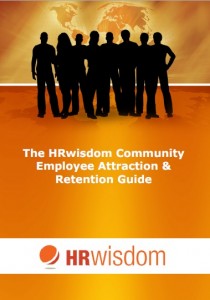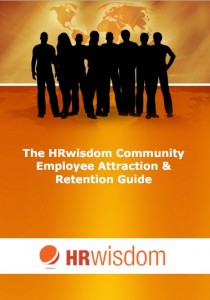Employers often ask us for information on the reasons why employees underperform.
 Today the HRwisdom Blog is sharing some useful information for you to use.
Today the HRwisdom Blog is sharing some useful information for you to use.
However, first we should remind you to always seek legal advice before you commence any performance management proceedings which might ultimately end in termination of employment.
Depending on your location, click the appropriate link to get our recommendations for specific workplace law advice:
- Australian Capital Territory
- New South Wales
- Northern Territory
- Queensland
- South Australia
- Tasmania
- Victoria
- Western Australia
Each of the sites above contain a link to a free downloadable performance management documents, HR templates including a written warning letter template for you to use in your organisation.
As for information and hints on how to handle employee underperformance, we recommend following the details below as advised by Fair Work Australia.
Underperformance or poor performance can be exhibited in the following ways:
- Unsatisfactory work performance, that is, a failure to perform the duties of the position or to perform them to the standard required
- Non-compliance with workplace policies,
- Rules or procedures
- Unacceptable behaviour in the workplace
- Disruptive or negative behaviour that impacts on co-workers.
Underperformance is not the same as misconduct.
Misconduct is very serious behaviour such as theft or assault which may warrant instant dismissal.
In cases of misconduct employers should seek specific legal advice about how to proceed before taking any action.
What are the reasons why employees underperform?
There are many reasons why an employee may perform poorly.
Some of the common reasons include:
- An employee doesn’t know what is expected because goals and/or standards or workplace policies and consequences are not clear (or have not been set)
- Interpersonal differences
- There is a mismatch between an employee’s capabilities and the job they are required to undertake, or the employee does not have the knowledge or skills to do the job expected of them
- An employee does not know whether they are doing a good job because there is no counselling or feedback on their performance
- Lack of personal motivation, low morale in the workplace and/or poor work environment
- Personal issues such as family stress, physical and/or mental health problems or problems with drugs or alcohol
- Cultural misunderstandings
- Workplace bullying.
Underperformance should be dealt with promptly and appropriately by an employer, as employees are often unaware they are not performing well and so are unlikely to change their performance.
Best practice employers understand that issues that are not addressed promptly also have the potential to become more serious over time. This can have a negative effect on the business as a whole as it can affect the productivity and performance of the entire workplace.
Helpful hints
Dealing with underperformance can be challenging and confronting for employees and employers alike, but it does need to be addressed.
Managers need clear procedures, organisational support and the courage and willingness to manage the issue.
Provide training to managers on how to handle underperformance issues. It may be helpful to include role play workshops in the training material so that managers can learn how to approach matters in real-life scenarios. Well trained managers are better able to identify and address issues of underperformance.
If performance problems arise, it is crucial that they be resolved early. The longer that poor performance is allowed to continue, the more difficult a satisfactory resolution becomes, and the more the overall credibility of the system may suffer.
Not every underperformance issue needs a structured process. Explore other options for improving performance, such as the use of continuous feedback.
Remember that for performance management to be successful, the culture of the business should be one which encourages ongoing feedback and discussion about performance issues in open and supportive environments.
Ultimately, of course, an employee may choose to submit a complaint or claim against you (e.g. unfair dismissal, discrimination) even if you follow a very clear and proper process.
This is why we recommend you seeking early expert advice from here:
- Australian Capital Territory
- New South Wales
- Northern Territory
- Queensland
- South Australia
- Tasmania
- Victoria
- Western Australia
HRwisdom










